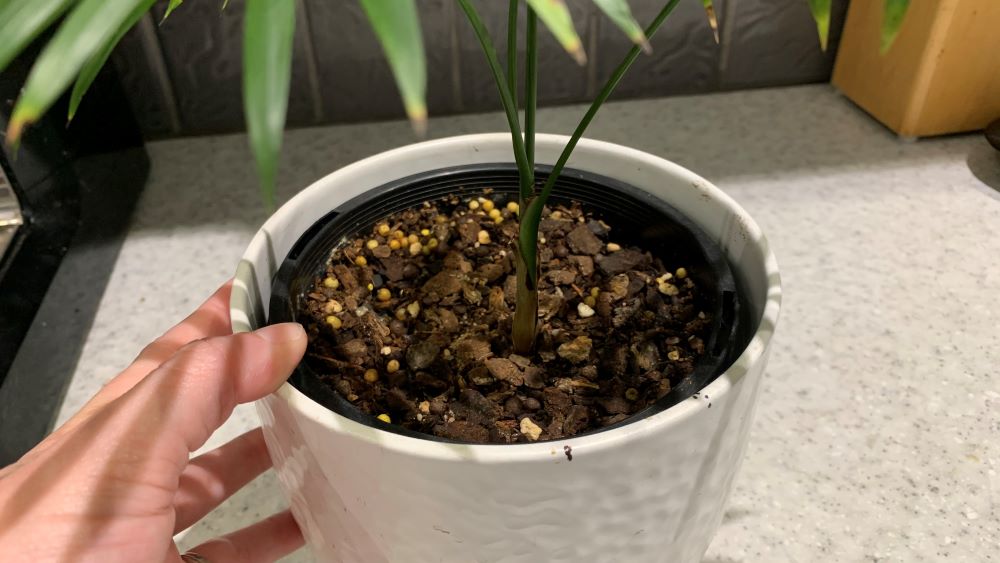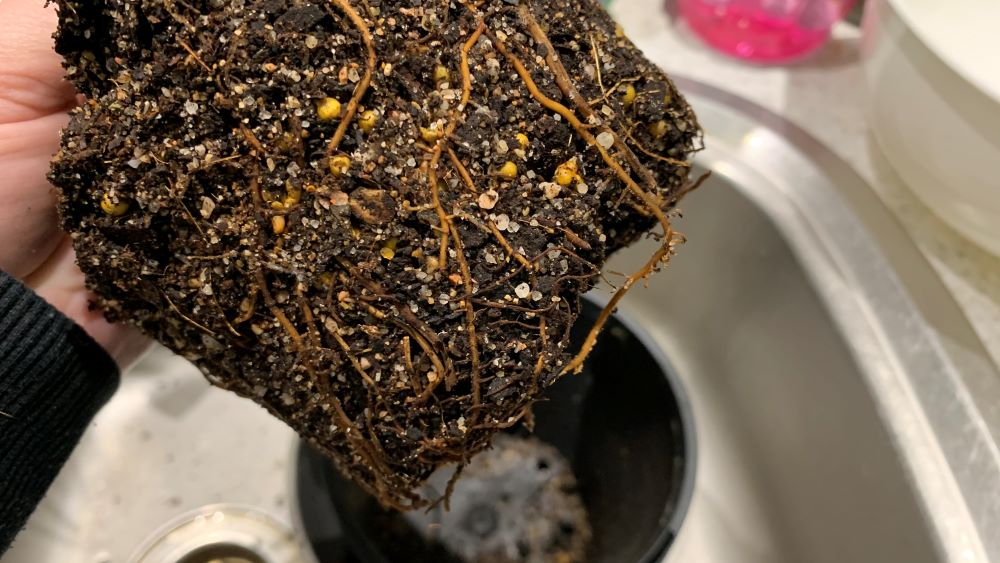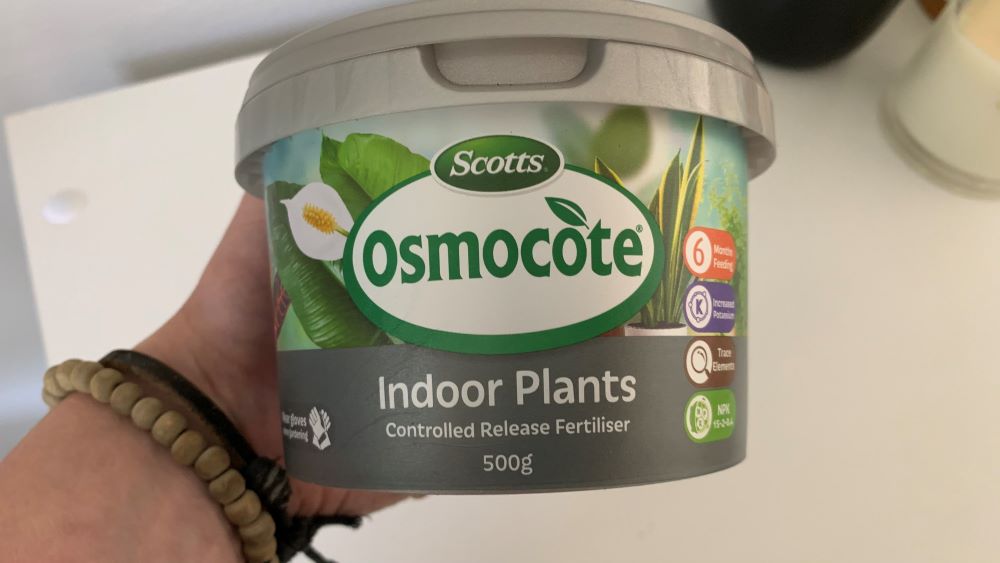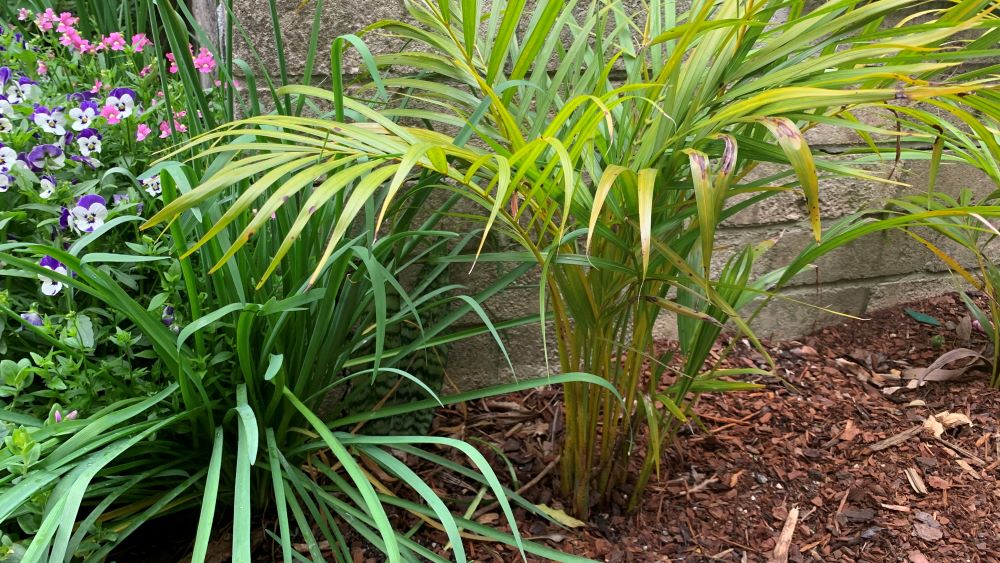Palm trees can die if they are not getting the right amount of sunlight, if they are not getting enough water, too much fertilizer if they are planted in poor soil or if they are overgrown with old branches. The easy steps to save your palm tree include getting the right amount of water, remove damaged leaves, remove damaged leaves and top dress with compost.
Palm trees can be saved if the problem is caught early. This article will explore the top causes of a dying palm tree and my 9 easy steps to save your tree.

Top causes of a dying palm tree
The top causes of a dying palm tree are listed below. Each of these can cause your palm tree to die so have a look through the list to help you identify the problem.
- Too much sun
- Not enough sun
- Overwatering
- Not enough water
- Too much fertilizer
- Poor soil
- The palm needs repotting
Top 9 tips to save a dying palm tree
Here are my top 9 tips to save a dying palm tree at home.
1. Test the soil to see if it is wet or dry
Getting the water balance right is essential to save a dying palm tree. Stick your finger or a spade in the soil near your palm tree and see if the soil looks dry or wet. If the soil looks dry it could be suffering from low water levels. If the soil is wet and soggy, the palm tree could be overwatered. This will usually be matched with brown or black marks on the leaves.

2. Deep water your palm tree if it is dry
Deep water a dry palm tree. Use your hose with a sprayer nozzle to water outdoor palms. Set the sprayer to shower to gently water the roots. Aim the water at the base of the palm to avoid fungus growing on the leaves. Allow the palm to dry out between watering and test the soil before watering again.
3. Reduce your watering if the soil is too wet
If the soil is too wet, then it is time to slow down your watering. The water build up could be because the soil is not draining well. This is easily solved if your palm is in a pot. Simply repot it using some fresh potting soil.
Add some mulch to the top of the soil for outdoor palms and this will absorb excess water from the rain and gently release it to the palm.
As a general rule, palms can survive well with watering once per week in the warmer weather and a deep watering once every 2 weeks in the cool weather.
4. Trim off damaged leaves
To help a dying palm to recover trim off any damaged leaves during spring and summer. Older palm fronds will naturally dry off and turn brown. These can be trimmed off at the base to give it more room to grow new fronds and for the sun to reach the healthy leaves.
If the palm has dried out or has suffered from frost damage the leaves will also become damaged. Wait until all chance of frost has passed then you can remove the damaged leaves. Leaves that have already been damaged by frost will keep the other healthy leaves protected.
5. Top dress with compost
For palms that are growing in the ground you can revive them with a top dressing of compost. It can be difficult to adjust the soil once the palm has been planted but top dressing with soil will help it to repair. Rake back any mulch and top dress the soil with 2-3 inches of compost. The nutrients will flow down to the roots and feed the plant and soil bacteria.
Top dress palm trees every year in spring to help to gently feed the plant. This can help to repair a dying palm tree by feeding the roots, improving the soil and help the soil to hold more water.
6. Repot the plant if the soil is old
For potted palm trees, you can save them by repotting and giving them some fresh soil to grow in. If your palm tree is turning brown and dying back repotting can be the best option. Take the palm out of the pot and shake off the excess soil gently.
You can repot the palm into the same pot but make sure you clean it first. Wash the pot out with warm, soapy water and let the pot dry out before potting the palm back in. Use good quality potting soil and put the palm back in the pot. Water it in well and allow the excess water to drain out.

7. Add some slow release fertilizer
Slow release fertilizer can help a dying palm to recover. For indoor palms give them some indoor slow release fertilizer in spring. For outdoor palms, use some pelleted chicken manure in spring after top dressing with compost.

8. Add bark mulch
Mulching outdoor palms is a great way to help them to recover, regulate the soil moisture and keep weeds away. Layer 2-3 inches of bark mulch around the base of the palm and try to keep it away from the stems. This is a great mulch for all outdoor plants.
For indoor palms it is up to you if you add mulch. You could use some coconut coir on top to keep it moist if you have some.

9. Get the sunlight right
Most palms will thrive on full sun or part shade. Common palms like kentia, parlor or areca palms will tolerate full sun to part shade. Brown leaf tips can be a sign of sunburn and yellowing can be a sign that they are not getting enough sun.
For potted palms, give them a holiday outdoors for around a month. Move them to a part shade position so they don’t get shocked by too much light.
How to Save a Dying Palm Tree | Summary
Palm trees are hardy and recover if they are treated right. Repotting palms is usually a good idea if they look like they are suffering and allow palms to dry out between watering. Add some slow release fertilizer in spring and water it in. Palm trees can send up new fronds within weeks of fixing the problem. Once you see signs of new growth, remove old leaves and stems to give them more room to grow.
Happy growing.
I am an accredited practicing dietitian, experienced gardener and a dedicated cook. I love writing and sharing my experience so you can learn from my successes and mistakes.
